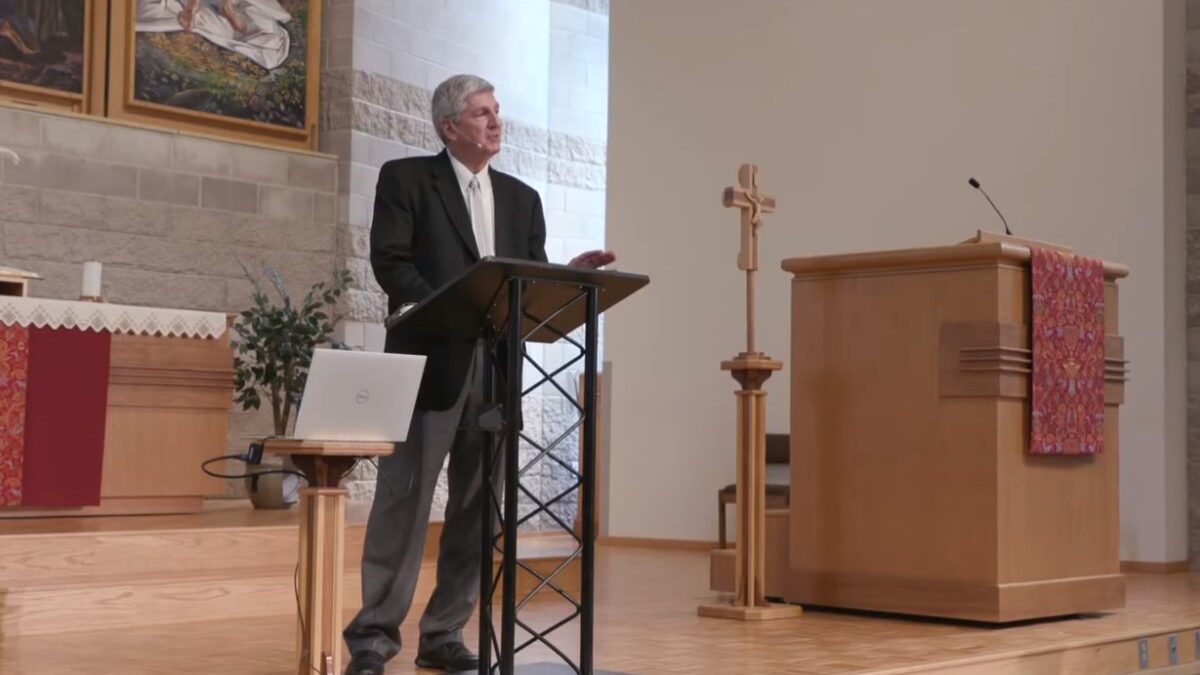
Perched in the old city of Akko, Israel, is an enormous citadel, one that has been built, leveled, and rebuilt again by various powers. When I visited the citadel, I recall mentally organizing the history, asking my friend to translate from Hebrew the timeline of the citadel’s ever-fraught ownership. From the Crusaders to the Ottomans to the British, the walls of Akko tell a story, one that locals are eager to both preserve and tell through intensive restoration projects.
I was reminded of this mantra—walls tell stories—when I heard of a recent push within academia to remove pictures of scientists, Nobel Prize winners, deans, and various other accolade recipients from the walls of university halls under the auspices of their insufficient racial and sex differences. Most of the suspect portraits are of older white men.
In many instances, such as in the case of the Molecular & Integrative Physiology Department at the University of Michigan, the “dude wall” (as coined by Rachel Maddow of MSNBC) has simply been moved to a less-prominent location. But the relocation hasn’t always been received warmly. For example, Brigham and Women’s Hospital in Boston, a teaching hospital for Harvard Medical School, speakers presenting at Bornstein Auditorium now orate within the confines of bare walls, a situation in which former Dean of Harvard Medical School Dr. Jeffrey Flier has expressed public disappointment.
When I last lectured in @BrighamWomens Bornstein auditorium, walls were adorned with portraits of prior luminaries of medicine & surgery. Connecting to a glorious past. Now all gone. Hope everyone is happy. I’m not. (Neither were those I asked- afraid to say openly). Sad. pic.twitter.com/Bsz89r2SBB
— Jeffrey Flier (@jflier) April 12, 2019
Flier notes that, at Harvard, they have dealt with the lack of favored racial groups among the portraits of historically celebrated figures by incorporating new portraits into the displays, not removing individuals entirely from certain walls. Flier penned an op-ed in The Boston Globe where he detailed the value of this approach:
Removing all the historic amphitheater portraits — leaving bare walls in their place for the past year — won’t advance diversity. What might? An array of art that reflects today’s rapidly changing physician leadership, while recognizing essential but less male-dominated health-related professions, such as nursing and social work.
Perhaps a rotating subset of older portraits displayed alongside newly commissioned works — with the reasons for the choices conveyed in historically informed commentary. As images of women and minorities join those of past leaders, the divide between limited past diversity and the more diverse present would diminish. And importantly, newly configured portraiture could provide an essential lesson: that diversity and inclusion are hard-won victories that should neither be hidden nor taken for granted.
Those advocating for such removal have been doing so under the banner that the previous portraits celebrated those who held power and erased the history of women and minorities. I will engage this argument more substantially because it is one I see made repeatedly.
An excerpt from the NPR article says is provided below: “But some argue that the old portraits themselves have erased history, by glorifying white men who hold power while ignoring the contributions to science and medicine made by women and people of color.”
The argument rests on the unspoken notion that everyone is an active participant in a power structure; that those purportedly in positions of power cannot possibly be decent humans; and that, if something good comes of their work, it is due to their power and celebrated at the expense of others. Reminiscent of Marxist ideology, the person perceived to have more power in a particular dynamic, however we may be defining that power, is the default villain. Full stop.
It’s a sort of twisted rhetoric, one that robs individuals of the ability to be lauded for honorable work if they are of the incorrect socio-economic class. Here, given the fixation on “old white men,” the proxy for socio-economic class appears to be a confluence of race, sex, and age. And the fact that these scientists were born into this class means they cannot be celebrated because they are occupying the “wrong” place in the pyramid. This is faulty logic, stemming from a failure to separate the ills of society from the ills of the individual.
Racism and sexism are part of our history and quite real, and it’s a fair exercise to hold society accountable. What is not a fair exercise, however, is to shame or attempt to expunge from the historical canon individuals who engage in remarkable scientific advances, like the discovery of a particular vaccine, because they did so at a time society was battling sexism and racism.
Success is not a zero-sum game, but the Marxist framework seemingly advocated for here insists success always comes at the oppression of another. It doesn’t matter if that particular doctor was benevolent and kind—the oppression can be an imprecise, nebulous metric that mostly refers to society’s behavior as a whole.
If there were evidence that particular doctors were horribly sexist or racist, I would be the first person advocating for their removal from the “dude wall.” Bigotry has no place on the walls of our institutions of higher learning. But that is not what is happening here. Doctors and scientists are being taken to task for the ills of the era they grew up in, and that should alarm us all.
Because human history is full of ills, this type of standard will be evermore impossible to meet. Humans never exist in a vacuum, and there has never been a perfect (or even close to perfect) time in history. At the time of the Enlightenment, when Voltaire was penning a copious number of letters to Catherine the Great, the slave trade was still alive in France, although the abolitionist movement was thankfully gaining in numbers. When Jonas Salk, the son of Russian Jews fleeing the pogroms of Eastern Europe, introduced the polio vaccine, Japanese Americans had been interred in camps under the auspices of President Franklin D. Roosevelt just a decade earlier.
These examples are not to suggest that we should ignore history. Quite the contrary—we should be ever-vigilant. But it does show that holding Voltaire responsible for the ills of the French slave trade or Salk for the ills of Roosevelt’s policies is an absurd endeavor. As Flier candidly observed, “Some wish to judge those who lived at a time when different values prevailed, but this is hardly straightforward.”
But even if we indulge for a moment their argument, the metric of “old white men” seems thorny and grossly imprecise for arriving at supposed “justice.” Just more than one-fifth of Nobel Prize winners are Jewish, many of the older winners from families escaping persecution in Europe or doing so themselves. Thus, when we discuss so-called diversity, we are learning that there are “correct” types of diversity and “incorrect” types of diversity.
What the recent examples at University of Michigan and Brigham and Women’s Hospital reveal is that there is a strange desire to be attentive to history by erasing it. Like the citadel in Akko, the walls have a story of how we arrived here. Flier’s suggestion was the most sound in acknowledging the imperfections and ills of history while making space for the growth of the present. Indeed, if we don’t engage in this balancing act, we risk forgetting the good with the bad.









